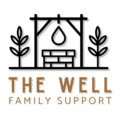Fed Is Best
Few topics spark more discussion in parenting circles than breastfeeding versus formula feeding. Whether you’re a first-time parent or welcoming another baby, you may feel pressure from social media, family, or even well-meaning friends about how you “should” feed your baby.
Let’s start with a simple truth: Fed is best.
The way you nourish your baby is a deeply personal decision, and no one should make you feel guilty for your choice. What matters most is that your baby is fed, healthy, and thriving—whether that’s through breastfeeding, formula feeding, or a combination of both.
Understanding the benefits and challenges of each feeding method can help you make an informed, confident decision for your family.
Breastfeeding: Benefits and Considerations
Benefits of Breastfeeding
The American Academy of Pediatrics (AAP) recommends exclusive breastfeeding for the first six months and continued breastfeeding alongside complementary foods for at least one year—or as long as mother and baby desire (AAP, 2022).
For Baby:
- Optimal Nutrition: Breast milk naturally adapts to your baby’s age, time of day, and health needs (Victora et al., 2016).
- Immune Support: It contains antibodies that protect against infections such as ear infections and respiratory illnesses (AAP, 2022).
- Gentle Digestion: Breast milk is easier for most infants to digest, reducing issues like constipation and gas.
- Reduced SIDS Risk: Breastfeeding is associated with a lower risk of sudden infant death syndrome (Hauck et al., 2011).
- Cognitive Development: Studies suggest a slight advantage in cognitive outcomes for breastfed infants (Victora et al., 2015).
For Mothers:
- Supports Postpartum Recovery: Breastfeeding stimulates oxytocin, helping the uterus return to pre-pregnancy size.
- Protective Health Benefits: It may reduce the risk of breast cancer, ovarian cancer, type 2 diabetes, and high blood pressure (Chowdhury et al., 2015).
- Convenience and Cost Savings: Breast milk is always available, at the right temperature, and free.
Common Challenges
Breastfeeding can take practice and patience. Some common challenges include:
- Latching difficulties or nipple pain in the early weeks
- Exhaustion from frequent feeding, especially with newborns
- Dietary sensitivities in some infants
- Low or oversupply of milk
Where to Find Support
If you’re struggling, you don’t have to navigate it alone. International Board Certified Lactation Consultants (IBCLCs), La Leche League, and your healthcare provider can provide guidance and hands-on help.
Helpful Breastfeeding Resources:
- Mayo Clinic – Breastfeeding Benefits & Challenges
- La Leche League International (LLLI)
- International Board of Lactation Consultant Examiners (IBLCE)
Formula Feeding: Benefits and Considerations
Formula feeding is a valid, healthy, and often necessary choice for many families. Parents may choose formula due to medical reasons, work schedules, personal comfort, or difficulties with breastfeeding.
Benefits of Formula Feeding
- Flexibility: Anyone can help with feedings, allowing parents to share responsibilities.
- Dietary Freedom: Mothers don’t need to monitor food or medication intake.
- Measurable Intake: It’s easy to see exactly how much your baby is eating.
- Physical Relief: For mothers with pain, exhaustion, or medical concerns, formula can provide a sustainable alternative.
Common Challenges
- Expense: Formula can cost $1,200–$1,500 per year (CDC, 2023).
- Preparation: Mixing and storing formula requires care to avoid contamination.
- Digestive Sensitivities: Some babies may need specialized or hypoallergenic formulas.
Helpful Formula Feeding Resources:
- American Pregnancy Association – Bottle Feeding Basics
- WebMD – Breastfeeding vs. Formula Feeding
- Centers for Disease Control and Prevention (CDC) – Formula Preparation Guidelines
Combination Feeding: Finding the Middle Ground
Many families choose a blend of breastfeeding and formula feeding. This approach can offer flexibility while maintaining the benefits of breast milk.
Why Parents Choose Combination Feeding
- Eases the transition for mothers returning to work
- Allows partners and caregivers to participate in feedings
- Supplements breast milk when supply is low
Consult your pediatrician or lactation consultant if you plan to combine both methods—they can help you maintain milk supply and balance your baby’s nutritional needs.
A Judgment-Free Feeding Zone
There is no single “right” way to feed your baby. Every family’s circumstances, health, and preferences are different. What matters most is that your baby is nourished, safe, and loved.
You are doing an incredible job—no matter how you choose to feed your child. Let’s create a culture of support, not shame, for all families.
We’d love to hear from you. What has your feeding journey looked like? Share your story in the comments below.
References
American Academy of Pediatrics (AAP). (2022). Breastfeeding Recommendations & Benefits. https://www.aap.org
Centers for Disease Control and Prevention (CDC). (2023). Infant Nutrition and Formula Feeding. https://www.cdc.gov
Hauck, F. R., Thompson, J. M., Tanabe, K. O., Moon, R. Y., & Vennemann, M. M. (2011). Breastfeeding and Reduced Risk of Sudden Infant Death Syndrome: A Meta-Analysis. Pediatrics, 128(1), e103–e110.
Victora, C. G., Bahl, R., Barros, A. J., França, G. V., Horton, S., Krasevec, J., & Rollins, N. C. (2016). Breastfeeding in the 21st Century: Epidemiology, Mechanisms, and Lifelong Effect. The Lancet, 387(10017), 475–490.





